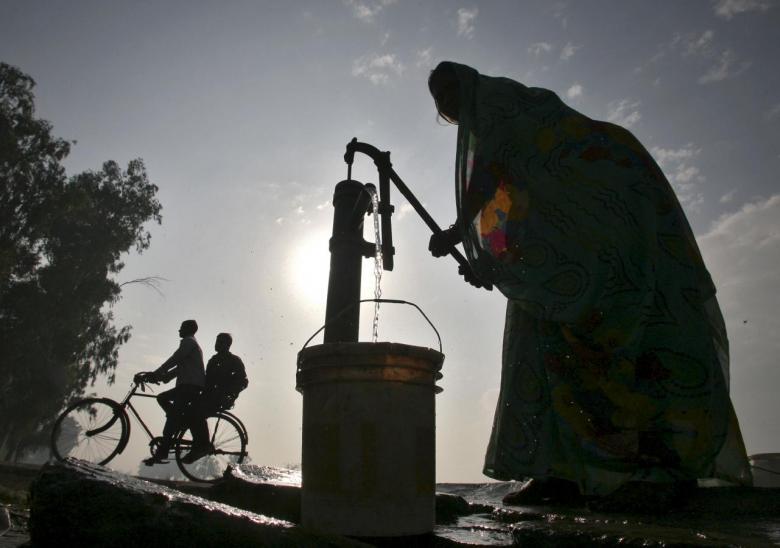
The current patterns of development across the country are not sustainable. A key element for achieving sustainable development is transition towards adopting Sustainable Consumption and Production (SCP) with increased resource use efficiency in the value chain, producing less waste and pollution to make cities and human settlements inclusive, safe, resilient and sustainable.
Sindh will achieve SDGs, says minister
A paradigm shift is required to mainstream SCP in crosscutting elements of the Sustainable Development Goals (SDG) goals. It requires a policy framework and the engagement of stakeholders.
Pakistan is currently the sixth populous country in the world with approximately 200 million of which Punjab has a share of 101.4 million. According the United Nations 2015 World Population Prospects Report, Pakistan’s population is expected to reach 300 million by 2050. Parallel to a swelling population, Pakistan’s GDP growth was reportedly the lowest among the developing Asian countries between 1970 and 2015.
This unprecedented and uncontrolled trend would come at the cost of a plethora of negative implications for the socio-economic development at large, hence also pushing the demand of the populace for energy, food, water and other resources to increase.
In the recent SDG Index and Dashboard Report, Pakistan ranked 115th in performance towards the 17 SDGs and their 169 targets across areas including health, economic growth and climate action.
The best performing countries on the index include Sweden (1st), Denmark (2nd) and Norway (3rd), and the lowest ranking countries are the sub-Saharan African countries of Democratic Republic of Congo (147th), Liberia (148th) and the Central African Republic (149th). India sits at 110th, Myanmar (117th), Bangladesh (118th), Sri Lanka (97th) and Nepal (103rd).
With the given scarcity of resources, the capacity of meeting public demand and expectations for a sustainable and healthy lifestyle seems to be compromised. The current level of Pakistan’s material footprint per capita approximates 2.8 tons which is only one fifth of the level required to elevate Human Development. This goes to suggest that Pakistan is consuming much less at this point in time than it will ultimately have to, in order to lessen the inequality gap.
However, it is pertinent to note that an increased usage of resources is not recommended unless efforts are made to ensure an efficient use of existing resources.
The global resource use stands at 81,000 million tons, of which 814 million tons is used by Pakistan. The country extracts roughly 784 million tons from the environment and imports 62 million while 33 tons of material is exported, amounting to a material footprint of approximately 3.1 tons per capita per year.
Industrialisation in Pakistan
Industrialisation is taking over Pakistan rampantly, especially with a renewed focus on Industrial relocation and establishment of Industrial zones across the country via the CPEC initiative. The swiftly changing landscape of production to reach economies of scale is admirable, but this comes with a parallel trajectory of increasing energy and mineral use.
Statistics of the UN Environmental Program reveal that Pakistan used 4,353 Petajoules of energy in 2015 of which 37% came from renewable sources. The renewable energy has been trending upwards over the years, which is a positive step, but this increase is overshadowed by a comparatively even higher growth in the non-renewable energy, therefore declining the overall share of the renewable energy.
In terms of resource use efficiency of energy, Pakistan uses 25 MJ per dollar compared to the average of 16 MJ per dollar in the Asia Pacific. This raises several questions regarding the practices of our industries and hence leaves plenty of room to improve the efficiency in terms of energy use within the industrial sector. If we observe Pakistan’s Greenhouse Gas emission profile, energy and agriculture sectors combined emit about 87% of the total National GHG emission.
Energy contributes to 46% of the total greenhouse gas emission, of which 26% comes from electricity consumption, 25% from manufacturing, 23% from transportation and the remaining 25% from other energy subsectors.
Water use efficiency in Pakistan remains quite low as well. Pakistan consumes 1,070 liters per dollar which is four times the use of 128 liters per dollar in the Asia Pacific. The Water footprint of Pakistan declined more rapidly than water withdrawal (2.6% compared to 1.4%), indicating that although Pakistan’s consumption for water has declined, extraction is still in place for export purposes or that a major misallocation exists.
Since Pakistan is already facing a major water-constraint, assessing water use efficiency in relation to allocations within various economic sectors is an important facet to look at for the policy makers.
The negative impacts and adversities of our unsustainable consumption and production patterns have left little hope for a sustained and safe environment for our future generations.
Safe drinking water target out of reach: experts
In order to achieve sustainable development and ensure long term viability of resources, it is imperative for the society to transition towards sustainable production and consumption as a whole as well as account for viable activities at an individual level.
There is a dire need to devise innovative policies and specific activities to enhance resource efficiency in the value chain sectors such as energy. It is the need of the time that all efforts be directed towards ensuring efficient use of the resources in order to transition towards a more equitable society and minimalize the regional disparities across the country. The Sustainable Development Goals, devised by the UN, are an exemplary guide which could pave way towards a more socio-economically viable state if accomplished.
Dr M Amanullah is chief economist and Myra Mufti is a research associate at the Planning and Development Department, Government of Punjab
Published in The Express Tribune, June 12th, 2017.
Like Business on Facebook, follow @TribuneBiz on Twitter to stay informed and join in the conversation.

1732071267-0/lana-(2)1732071267-0-165x106.webp)
1727242355-0/Diddy-(1)1727242355-0-165x106.webp)

1732063440-0/elon-(3)1732063440-0-165x106.webp)












COMMENTS (1)
Comments are moderated and generally will be posted if they are on-topic and not abusive.
For more information, please see our Comments FAQ